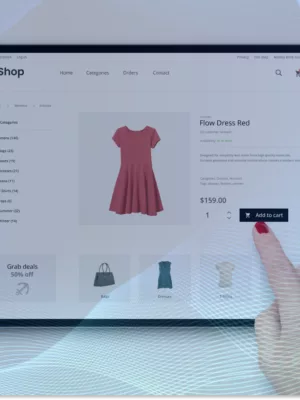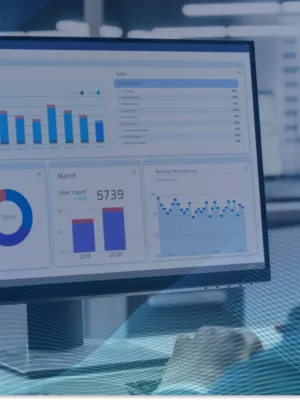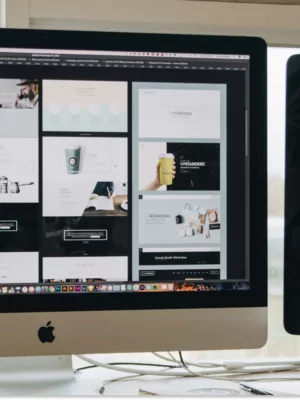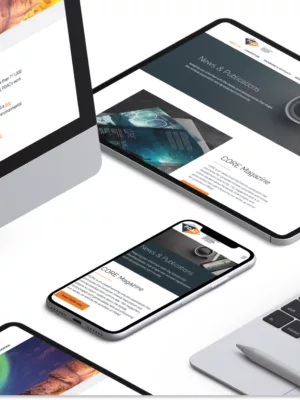
Transformation and innovation shouldn’t be something to fear in healthcare, no matter how large or small your company is. If you’re dealing with high levels of inefficiency, errors, and unhappy customers or patients, then it’s time for a major change. Learn how these 5 technologies can make a huge impact on your organization.
It can be difficult for healthcare organizations — hospitals, clinics, pharmaceutical companies, and healthtech providers — to consider adding new software to run their operations. Let alone, something custom.
Trust us, we’ve heard it all before.
“But it’s expensive!”
“It’s going to be too disruptive.”
“We don’t need something that complex.”
We get it. The last thing you want is to interrupt your existing system with new software that your processes need to be rearranged around, that your team has to learn, and that directly impacts the flow of patients and business.
But the long-reaching impact of digital transformation in healthcare cannot be ignored.
It doesn’t matter what size your company is. Healthcare organizations tend to experience similar challenges that require modern solutions. You’re not going to get that from outdated software, gaps in your systems, or error-filled processes.
The longer you take to digitally innovate, you won’t just be losing money due to inefficiency and high error rates, you’ll also compromise the quality (and cost) of care you provide to patients.
Today, we’d like to invite you to take a closer look at how custom web app development can transform your healthcare organization.
The technology helping healthcare organizations innovate
Patients, employees, and other users aren’t just going to use a web app because you put one in front of them. It has to be valuable.
It has to be able to handle those all-too-common healthcare challenges that organizations like yours face. In other words, your web app should improve the users’ overall experience with your organization while also enabling you to provide better outcomes.
In order to do this, we have to look a bit closer at the next-level technologies that make these custom apps worth investing in.
1. Corporate medical website integrations
Your website needs to be more than a faceless entity that answers common questions about what your organization does.
Thanks to modern technologies, corporate medical websites have become powerful and interactive portals for healthcare organizations to interact with patients and/or customers.
Let’s use the example of LifeLabs.
Canada’s largest lab provider has a website that’s equipped to help:
- Patients in need of testing.
- Healthcare providers that need tests performed to diagnose and confirm medical conditions.
- Corporate partners like employers, hospitals, clinical study operators, and retirement homes that need specialized testing services.
When Convergine redesigned the LifeLabs website, our goal was to resolve the issues holding LifeLabs back from providing superior services online.
So, the first thing we did was map out the different users’ pathways, so we could create custom flows depending on who visited the site (i.e. patient, healthcare provider, or corporate partner).
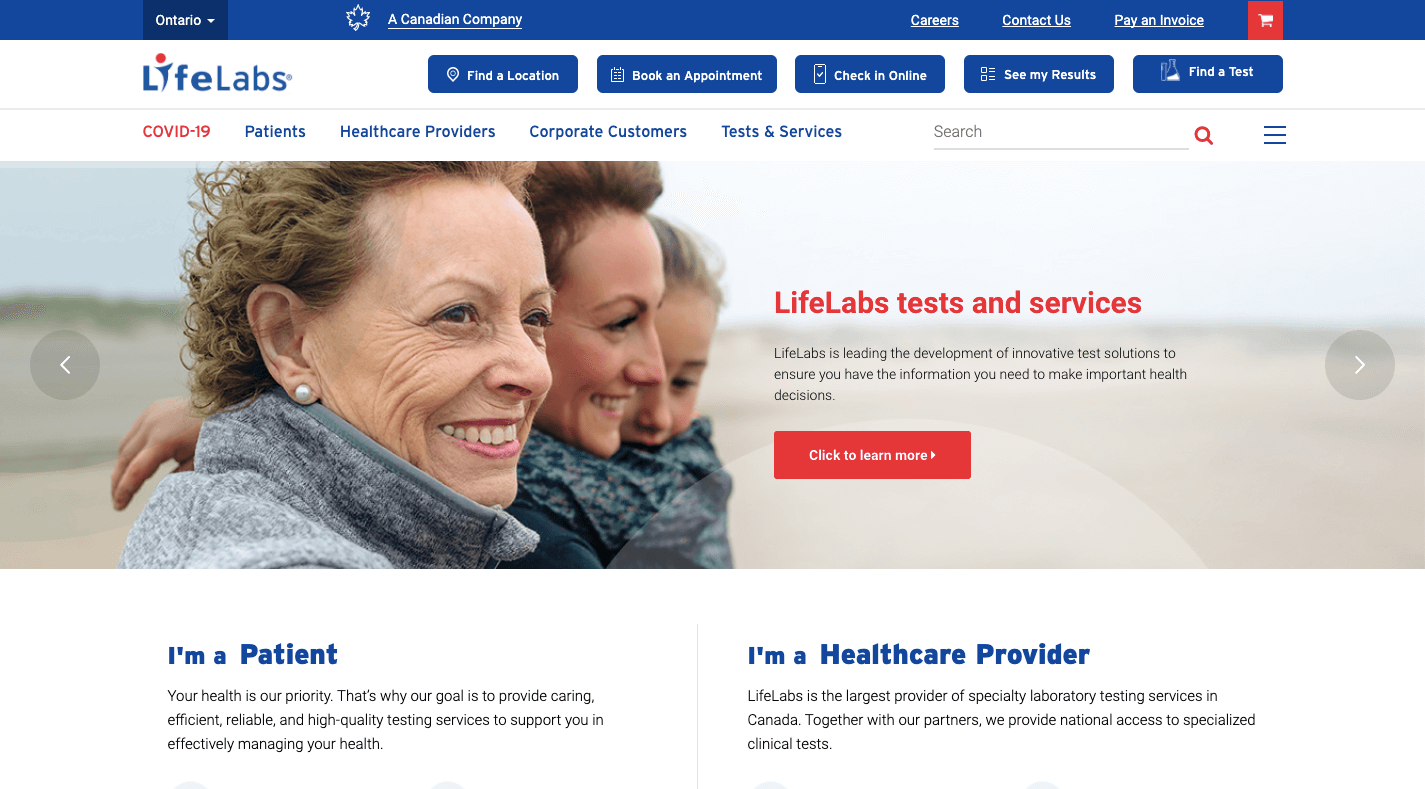
We ramped up the search function so it was easier for visitors to find exactly what they needed.
And because of LifeLabs’ expansive physical reach, a geolocation feature was necessary so that content would be prioritized based on visitors’ locations.
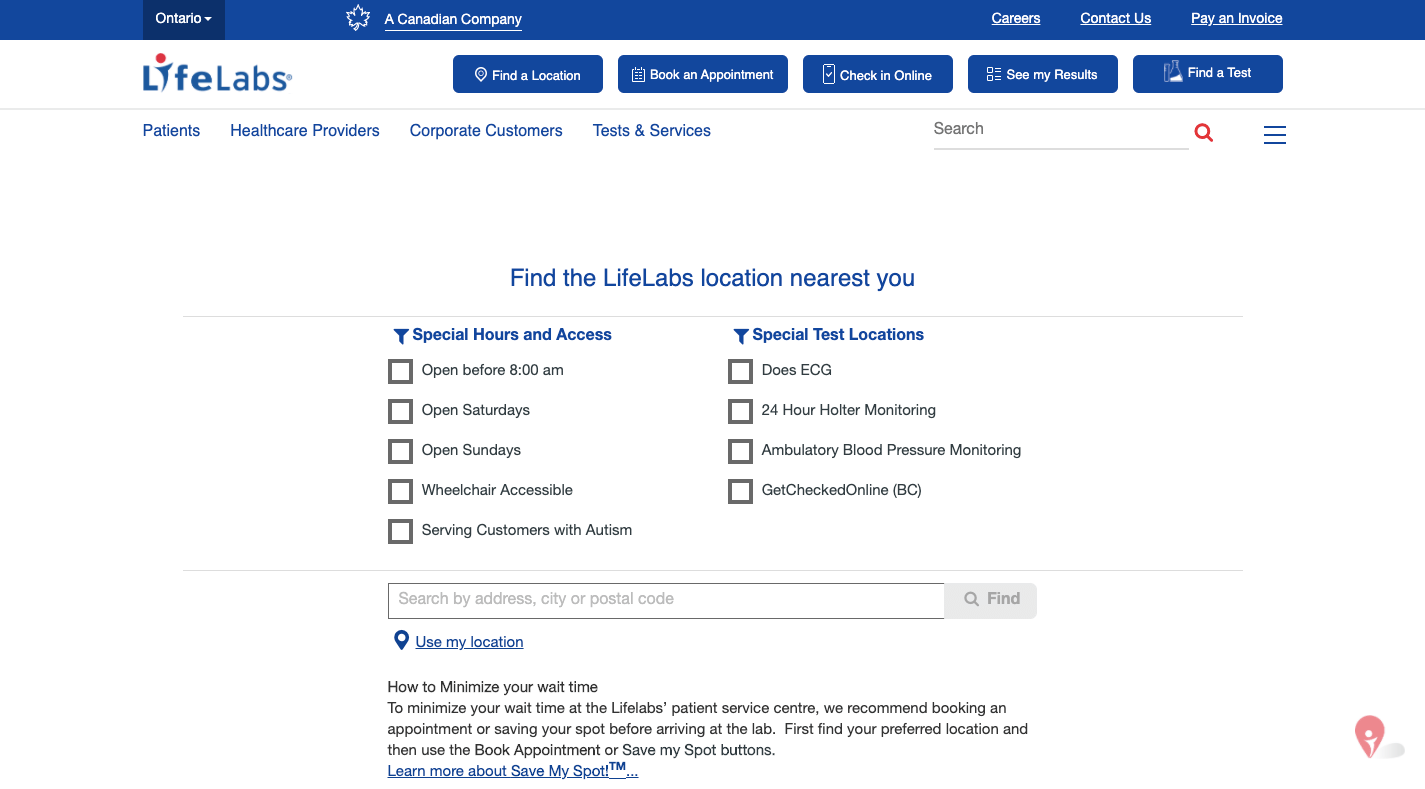
It was also important that LifeLabs be able to streamline payment processing from its website. But your standard shopping cart solution wouldn’t do. So, we built a custom shopping cart that enables customers to buy different products from multiple sites.
And, of course, the customer portal is available through the website, making it incredibly convenient for patients to keep track of their appointments, records, and payments.
2. Mobility
According to Google, there are more people browsing the web on their smartphones than any other device.
So, first things first, that corporate website your visitors find so valuable needs to be turned into a mobile powerhouse. And while you can easily design your website to provide the same exact experience for desktop, tablet, and mobile users, the better option may be to build a custom mobile website as LifeLabs did:
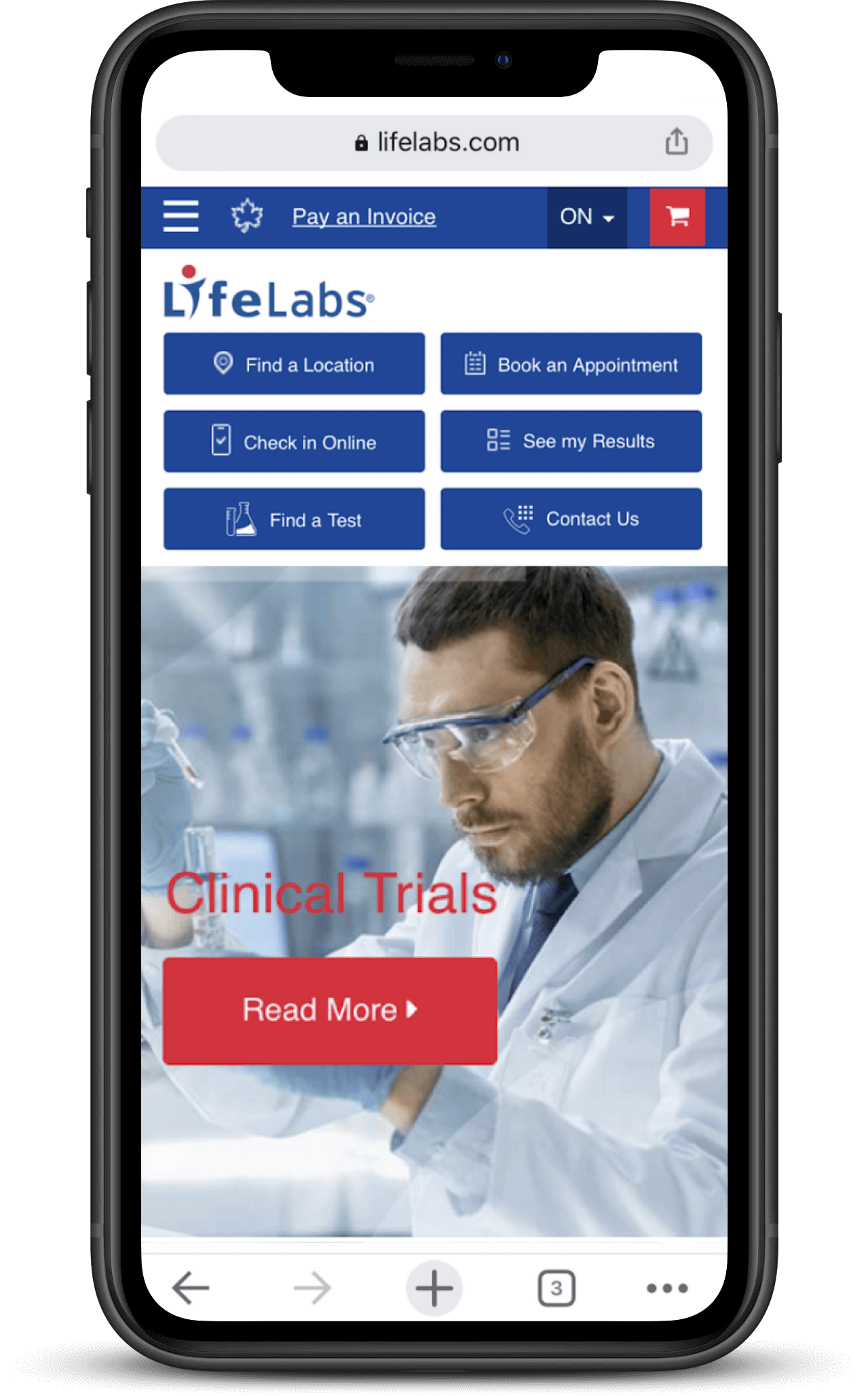
Just as you want to create a custom pathway for the different kinds of visitors you serve (e.g. patients, providers, or partners), you should do the same for the various devices they use.
A mobile app is another viable option and it’s useful for healthcare organizations of all types.
Clinics and hospitals can use it to give patients always-on access to their appointment scheduling, health records, as well as their patient portal. Whereas healthtech companies can turn their web apps into handheld solutions — like telemedicine appointment apps or patient management apps for healthcare providers.
The LifeLabs website, for instance, allows patients to book an appointment or “save my spot” for early check-in using this location-finder web app:
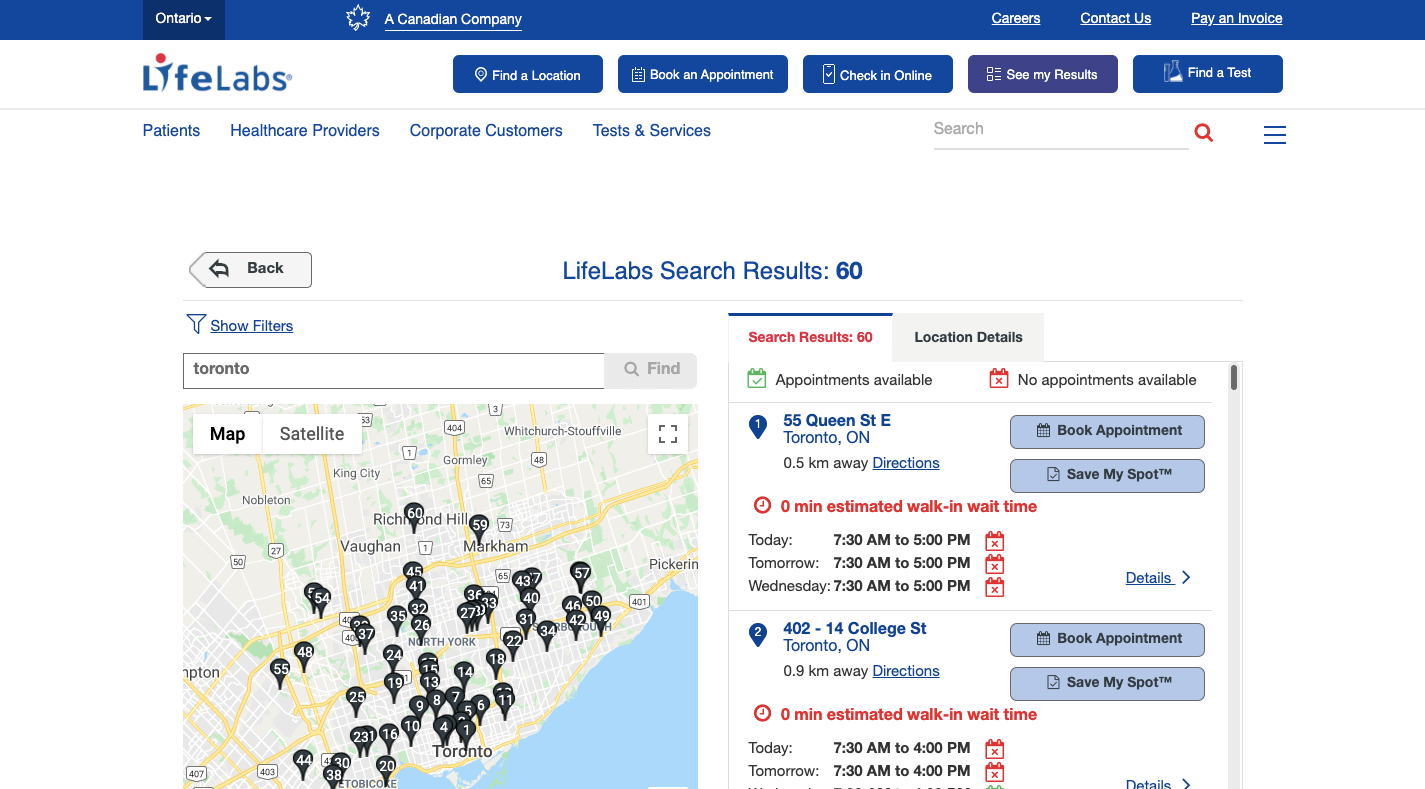
However, it also has a Save My Spot! mobile app customers can use to more easily check-in and hold their place at one of its labs:
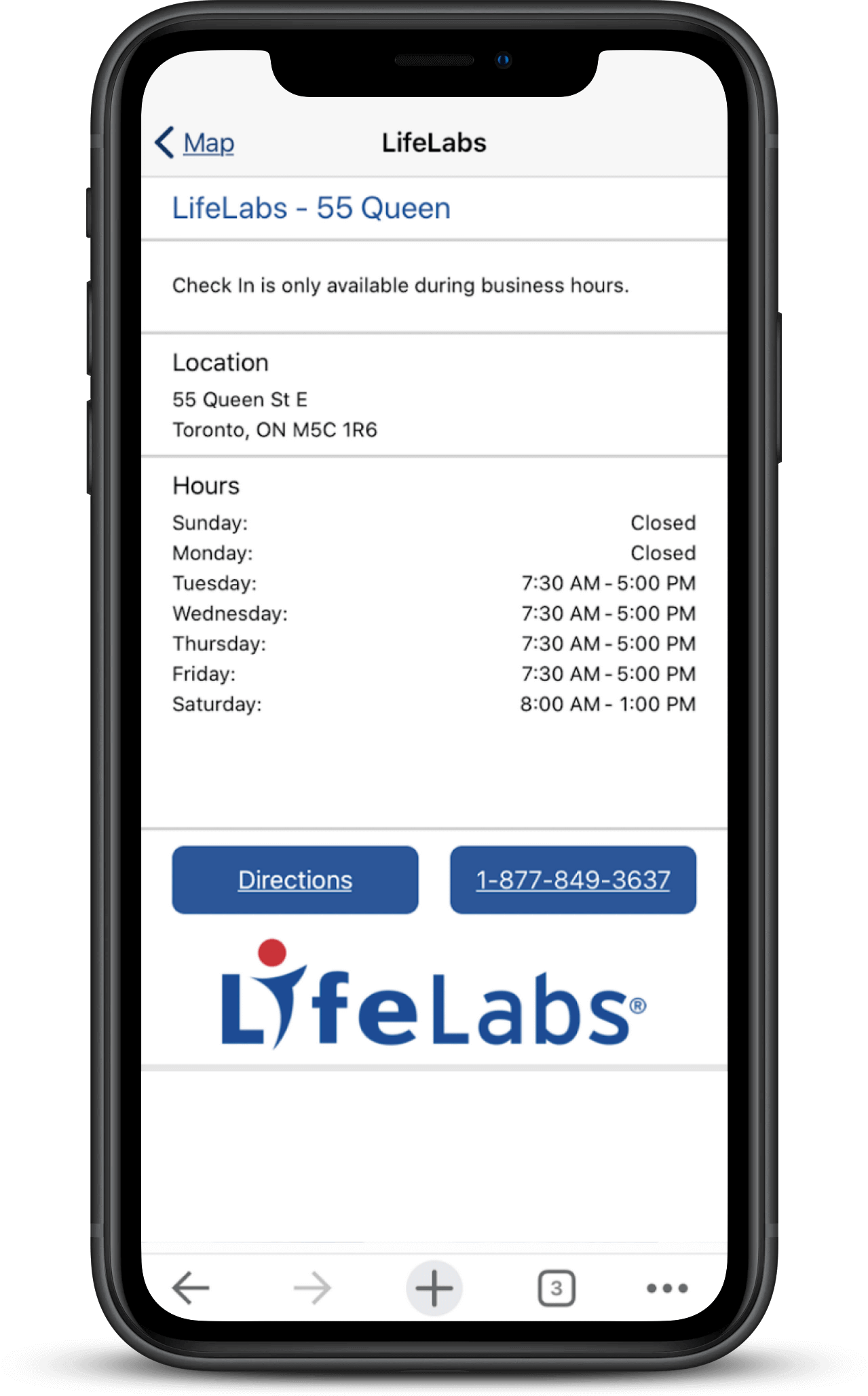
With a custom app, you can pick-and-choose which features belong there, creating a more streamlined experience for smartphone users and getting rid of the standard website features they don’t need.
3. Omnichannel connectivity
When we talk about “channels” in marketing, we’re usually referring to channels like a website, mobile app, and/or social media. Connecting these channels is a no-brainer.
But healthcare companies shouldn’t stop there.
For instance, the LifeLabs website isn’t a standalone solution.
The company needed to be able to connect users with different kinds of testing services across disparate locations and service providers. As such, the website now seamlessly integrates with other scheduling, check-in, and location finder apps, among others. Like my results:
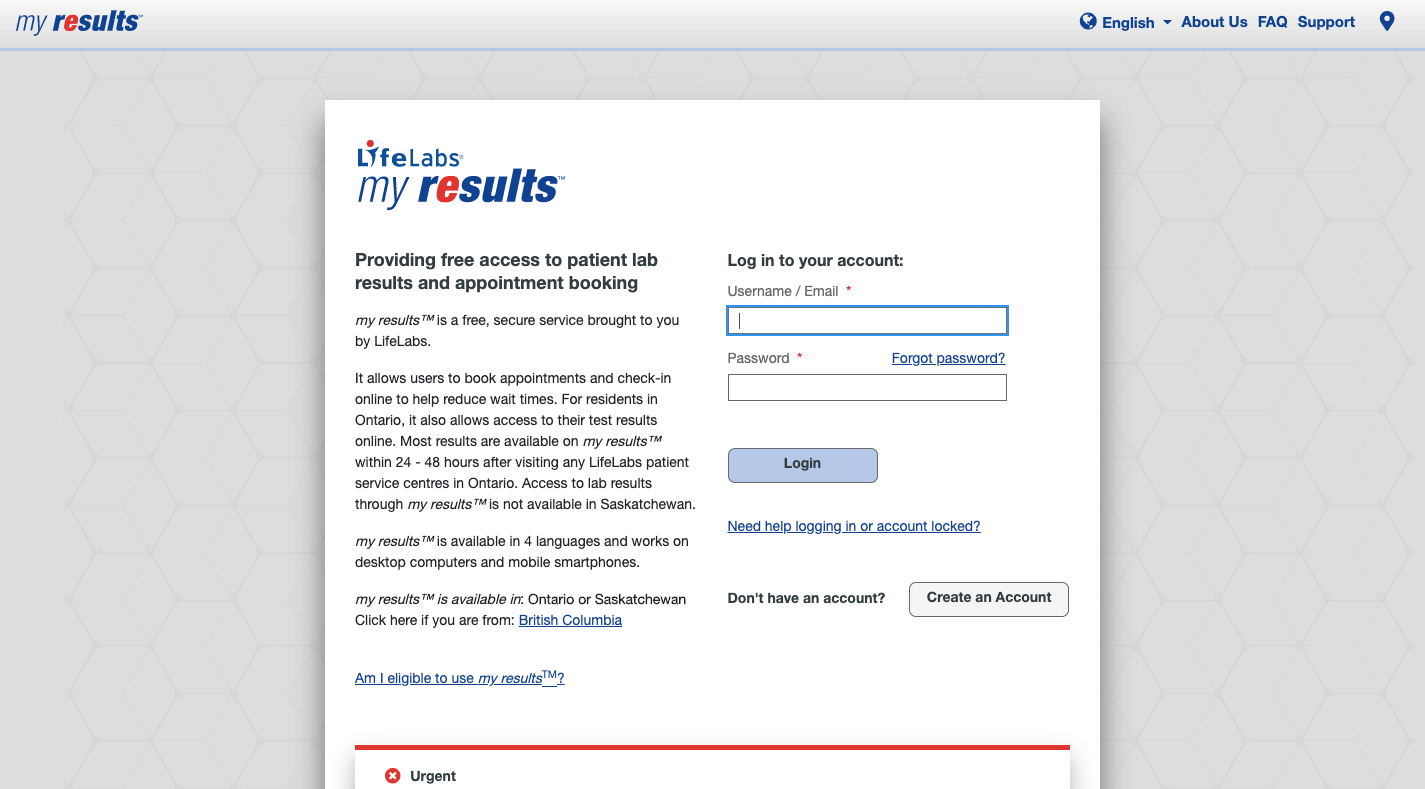
This way, visitors don’t have to visit different websites or apps to do different things. Everything can easily be accessed from the website.
There are other kinds of channels that healthcare companies, in particular, may consider integrating with their existing solutions.
For instance, healthcare companies with physical locations (like labs and clinics) may use self-service check-in kiosks.
Wearable tech (like smartwatches, health trackers, and glucose monitors) is another channel that might make sense for your company to integrate with its other systems.
This way, your patients’ or customers’ records will be consistent from touchpoint to touchpoint and always up-to-date.
Virtual appointment platforms are yet another channel that healthcare providers and their patients are in desperate need of right now, thanks to COVID-19. That said, it doesn’t make sense to centralize everything else — provider information, appointment scheduling, records lookup, and so on — without bringing the actual virtual chat piece into it as well.
And while a platform like Zoom has been really helpful in allowing healthcare providers to quickly move their patients to virtual appointments, it doesn’t integrate with their other business tools.
Microsoft Teams, on the other hand, has a fast, secure solution that integrates with your business infrastructure. As a Microsoft Gold partner, Convergine has helped healthcare companies successfully integrate this now-essential messaging and appointment hosting technology into their existing systems.
4. Big data
It wasn’t that long ago when it was only enterprises that were able to wield massive amounts of data. These days, however, healthcare companies of all sizes can efficiently process large amounts of customer data.
Part of the reason for this is the growing number of (connected) channels they have to pull from. We’ve already mentioned a number of them above:
- Desktop website
- Mobile website
- Mobile app
- Web app
- Wearable health tech
- Kiosk
The more channels you give users access to, the more data you’ll have to handle. With the right tools running behind the scenes, you can automate a lot of this as well.
For instance, if you have your electronic health record (EHR) system connected to each of the channels above, any information inputted into one of them would automatically be shared across your omnichannel network.
This makes your users’ lives easier as they don’t have to provide the same information over and over again.
This also makes your providers’ lives easier as they always have the most up-to-date and accurate records on hand. In addition to making your conversations with patients more pleasant, big data enables you to provide better care — personalized, preventative, as well as proactive.
The key to making this work is having the right system of interconnected apps and processes working behind the scenes for you. AI, in particular, is also going to be an important enabler of big data management.
5. Artificial intelligence
Although artificial intelligence is often depicted in film and on TV by self-aware machines, the truth is, AI already powers a lot of our world.
In healthcare we can use AI to do things like:
- Provide predictive and personalized search results.
- Provide proactive and efficient customer service through chatbot assistants.
- Detect patterns in a patient’s treatment plan and develop tailored solutions for it.
- Use machine learning to speed up internal company processes, drug development cycles, and so on.
And the more data you collect, the smarter your artificial intelligence becomes.
Let’s take a look at the example of Rocky Mountain Analytical.
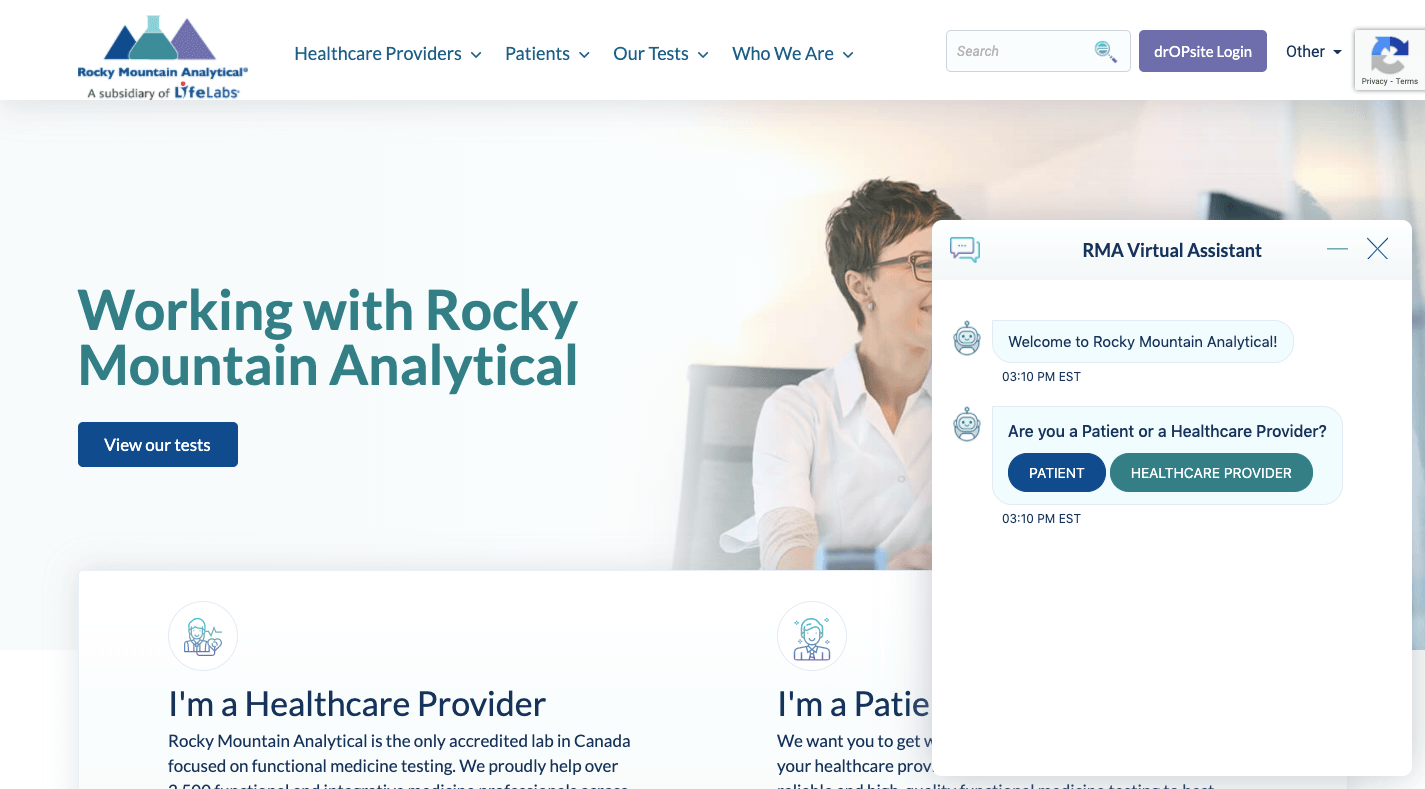
We designed a custom virtual assistant using the Microsoft Bot Framework for RMA.
The company already had a huge knowledge base that answered visitors’ common queries related to:
- Testing
- Sample collection
- Ordering
- Requisitions
- Account management
- References
- Payments
- Insurance issues
- And more
So, it made sense to create an interactive assistant equipped with all that knowledge. Rather than forcing visitors to find what they need on the site or to locate the knowledge base for help on their own, the chatbot would be there to proactively assist them.
But that’s not the only use case we envisioned for the virtual assistant. Chatbots are a great way to automate customer support when it comes to basic inquiries and even helps with navigating the website.
Because we built both the website and chatbot, we were able to host the chatbot’s database in the same Microsoft Azure cloud platform as everything else. This means there’d be no lag time in pulling up responses to visitors’ queries.
The fact of the matter is, cloud computing is responsible for all of these web apps and the channels they integrate with. Without a reliable, fast, and secure platform to host platforms like your healthcare website or chatbot app from, your visitors are more likely to experience frustration and distrust in your organization as a whole.
The benefits of digital transformation in healthcare
If the answer isn’t already clear as to why healthcare companies need to innovate with custom app solutions, let’s break it down:
Patient (and customer) benefits:
- They receive better care (e.g. on-time appointments, telehealth options, fewer errors).
- Managing their health becomes more flexible and convenient.
- They feel a greater sense of ownership over their data as well as their treatment.
- They’re empowered to do more on their own, like make appointments and ask chatbots for help.
- They receive more cost-effective care.
Bottom line: Your patients are more likely to trust you and be more accountable for their health when they feel they have more control over it.
Provider (and organization) benefits:
- You save money with more efficient processes and scalable software.
- Your organization will be better organized (e.g. operations, paperwork, schedules).
- You get greater access to patient data, which allows you to provide better and more proactive care.
- By automating processes with custom-made apps, you solve common tedious and time-consuming challenges.
- You can serve more customers as you increase your visibility and reputation online.
Bottom line: By freeing yourself from outdated software and processes, you’ll have more time and resources to dedicate to better patient care.
Wrap-up
In the past, we’ve designed the following kinds of custom apps for healthcare clients:
- Healthcare scheduling software for internal use
- Medical appointment apps for patients to request and manage their appointments
- Telehealth solutions for virtual appointments
- Corporate medical portals to manage documentation, employee records, and more
- mHealth apps for patient record management and tracking
- Digital patient solutions that connect mhealth solutions with EHRs
- As well as all the examples you saw above!
When building custom app solutions for our clients, we first and foremost design them with the user’s experience in mind. Functional design, easy-to-navigate platforms, and safe and speedy cloud-powered processes are at the core of everything we build.
In return, your healthcare organization becomes better equipped to handle the challenges so many other companies struggle with.






